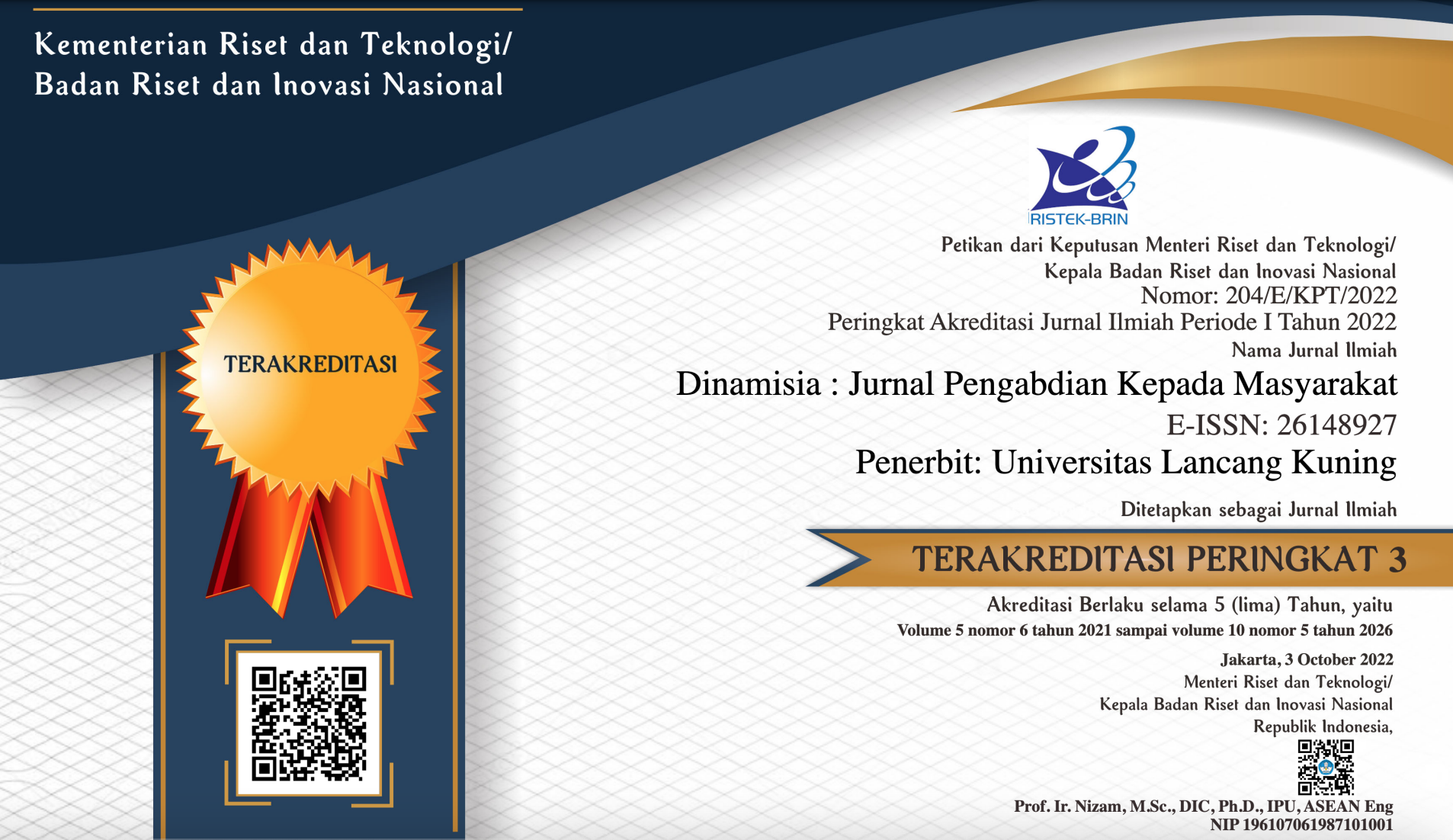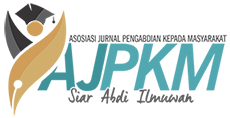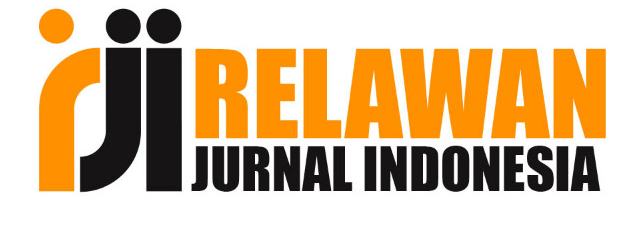Improving the Family Economy Through Education on Making Pekaor (Organic Glass Cleaner) From Waste Orange Peel, Lemongrass, Aloe Vera in Medan Timur District
Abstract
Garbage is leftover material that is no longer used, disliked, or something that must be disposed of, which generally comes from activities carried out by humans. Reducing pollutants and wastes from the environment is absolutely necessary for us to understand the relative importance of using different steps and setting up networks for continuous changes in carbon especially in the environment. Citrus fruit is one of the fruits that we often encounter in Indonesia. Approaching the orange season, we meet many vendors selling oranges on the side of the road or in other public places at affordable prices. And also not a few people are interested in buying it. But most people often throw the skin from the oranges they eat out of place. This often disturbs the beauty and cleanliness of our environment. Lemongrass is also a plant that is often used in household kitchens. Meanwhile citronella waste has good quality with a protein content of 7%, far above rice straw waste which is only 3.9%. Utilization of Citronella Waste (Cymbopogon nardus) Ammonia can also be used as another mixture. Likewise, with aloe vera skin waste, it is necessary to utilize the skin waste more optimally so that it can be utilized. Aloe vera peel waste can be utilized to become an extract that has the potential as a natural antimicrobial agent because it contains a number of secondary metabolite compounds. Today, home business is one of the most promising forms of business. Various kinds of creativity are carried out to be able to generate additional income by utilizing materials that are easy and easy to obtain by utilizing existing waste such as orange peels, lemongrass, and aloe vera. One with a lot of waste is in the Pulo Brayan Bengkel Village, located on Jl. Commission B No.10b, Pulo Brayan Bengkel Baru has a non-productive community that has a direct impact, so various programs are needed to increase productivity, including self- sufficiency in meeting the community’s economic needs and product marketing. There are problems that need to be assisted by Partners, namely a lack of knowledge and skills regarding the processing of orange peel, lemongrass, and aloe vera waste in the Brayan workshop village, the Brayan Bengkel community does not yet understand in depth about the knowledge and skills in terms of making packaging designs/brands for these products, not yet have good marketing and management techniques. To solve this problem the service team tries to help provide solutions in the form of training in processing orange peel, lemongrass, and aloe vera waste, training in making packaging designs/brands, and training in marketing techniques for the results of the Brayan Bengkel Village community.
Downloads
References
Insani Nurul Hayati, Kadek Devi Kalfika Anggria Wardani, & Dewa Ayu Putu Adhiya Garini Putri. (2022). Pengolahan Limbah Rumah Tangga Menjadi Pupuk Organik di Desa Dauh Puri Kauh. Dinamisia : Jurnal Pengabdian Kepada Masyarakat, 6(3), 800–805. https://doi.org/10.31849/dinamisia.v6i3.9441
Irianto K, 2016 Pemanfaatan bakteri untuk keselamatan lingkungan Mikrobiol. Lingkung. Marjenah M Kustiawan W Nurhiftiani I Sembiring K H M and Ediyono R P, 2018 Pemanfaatan
Limbah Kulit Buah-Buahan Sebagai Bahan Baku Pembuatan Pupuk Organik Cair ULIN J.Hutan Trop.
, 2 p. 120–127
Masrifatin, Y., Putri, L. D., Anwar, K., & Makki, M. (2021). Pendampingan Masyarakat dalam Menghadapi Pandemi Covid 19 melalui Program Pendidikan dan Ekonomi . Bisma : Bimbingan Swadaya Masyarakat, 1(2), 65-69. Retrieved from http://ejournal.ijshs.org/index.php/bisma/article/view/259
Mulyanita Djali M and Setiasih I S, 2019 Total Fenol, Flavonoid dan Aktivitas Antimikroba Ekstrak Limbah Kulit Lidah Buaya (Aloe chinensis baker) J. Vokasi Kesehat. 5, 2 p. 100.
Novita C I Helviza C and Asril, Pemanfaatan Limbah Sereh Wangi (Cymbopogon nardus) Amoniasi sebagai Pengganti Sebagian Pakan Basal terhadap Kualitas Semen Segar Domba Ekor Tipis.
Nurzanah, W., Dewi, I., Indrayani, I., & Lubis, R. W. (2022). Pelatihan pembuatan minyak kelapa dengan cara pemanasan dan pengendapan. Jurnal Derma Pengabdian Dosen Perguruan Tinggi (Jurnal DEPUTI), 2(2), 94–97. https://doi.org/10.54123/deputi.v2i2.178
Soetrisno R P W W, 2018 Pemanfaatan Limbah Kulit Jeruk (Citrus Sinenza L) Untuk Pengolahan Selai J. Hosp. 4, 2 p. 164–173.
Utami, C., Hayati, I., & Indrayani. (2019). Pemanfaatan Kaleng Bekas Menjadi Celengan Di Desa Kotasan. Prosiding Seminar Nasional …, 1(1), 332–336.



















